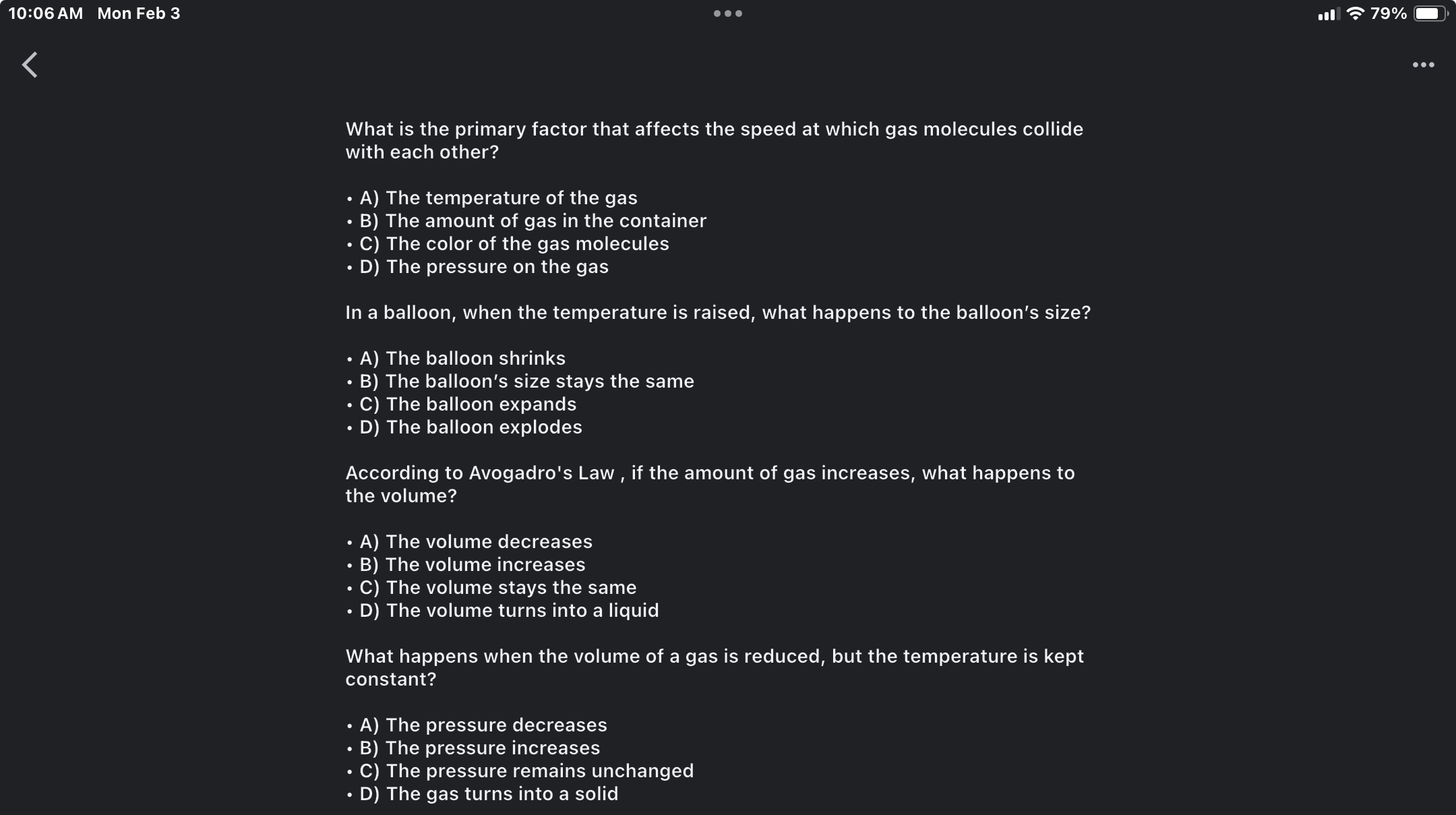What is the primary factor that affects the speed at which gas molecules collide with each other? In a balloon, when the temperature is raised, what happens to the balloon's size?... What is the primary factor that affects the speed at which gas molecules collide with each other? In a balloon, when the temperature is raised, what happens to the balloon's size? According to Avogadro's Law, if the amount of gas increases, what happens to the volume? What happens when the volume of a gas is reduced, but the temperature is kept constant?

Understand the Problem
The questions are related to gas behavior and laws in physics and chemistry, specifically regarding the effects of temperature and the amount of gas on volume and pressure. They are likely designed for educational purposes.
Answer
Temperature, balloon expands, volume increases, pressure increases.
The primary factor that affects the speed at which gas molecules collide with each other is the temperature of the gas. In a balloon, when the temperature is raised, the balloon expands. According to Avogadro's Law, if the amount of gas increases, the volume increases. When the volume of a gas is reduced, but the temperature is kept constant, the pressure increases.
Answer for screen readers
The primary factor that affects the speed at which gas molecules collide with each other is the temperature of the gas. In a balloon, when the temperature is raised, the balloon expands. According to Avogadro's Law, if the amount of gas increases, the volume increases. When the volume of a gas is reduced, but the temperature is kept constant, the pressure increases.
More Information
The speed increase of gas molecules at higher temperatures leads to more frequent collisions. When the temperature rises, gases expand as per Charles's Law, and increasing the moles of gas at constant temperature and pressure results in more volume, per Avogadro’s Law.
Tips
A common mistake is confusing pressure and temperature impacts on gas behavior. Remember that temperature affects molecular speed and volume directly as per Charles's Law.
Sources
- The Gas Laws of Boyle, Charles, and Avogadro - chem.libretexts.org
- The Ideal Gas Law | Physics - Lumen Learning - courses.lumenlearning.com
- Kinetic Molecular Theory of Gases – Introductory Chemistry - opentextbc.ca
AI-generated content may contain errors. Please verify critical information